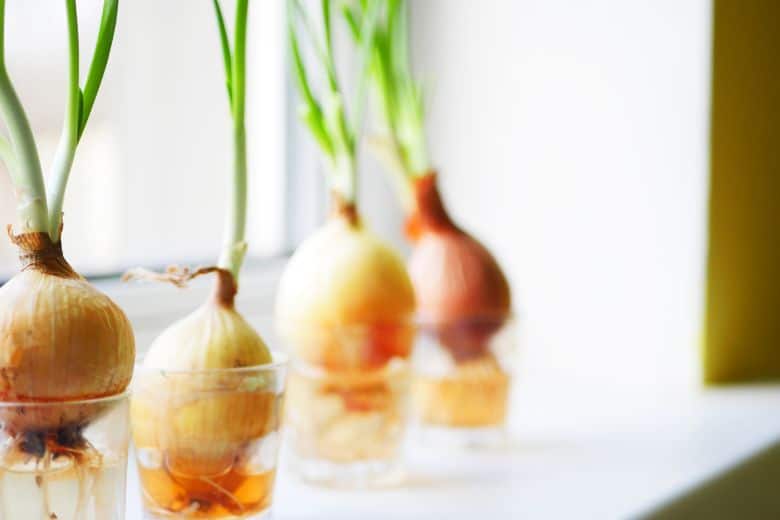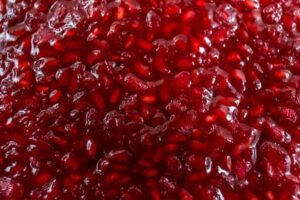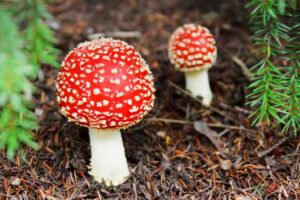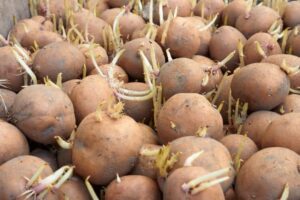
Hydroponic growing is a method of cultivating plants without the use of soil. Instead, the roots of the plants are suspended in nutrient-rich water. This method is becoming increasingly popular, and it is now possible to grow onions hydroponically.
Growing onions hydroponically offers numerous advantages over traditional growing methods, such as improved nutrient absorption and faster growth. In addition, hydroponic onions are more resistant to pests and diseases than their soil-grown counterparts. With the right setup and maintenance, you can successfully grow onions hydroponically and enjoy the benefits of this method.
What is Hydroponic Growing?
Hydroponic growing is the process of growing plants without soil. Instead, plants are grown using a nutrient-rich solution of water, minerals, and other nutrients that are delivered directly to the roots. This method of growing is incredibly efficient, as plants can access nutrients directly and grow faster than they would in soil.
Since hydroponic growing does not require soil, it eliminates the need for weeds and pests, making it a more sustainable and eco-friendly growing option. Hydroponic growing is also a great way to save space, as the plants can be grown in much smaller containers than traditional soil-based methods.
Whether you’re an experienced grower or just getting started, hydroponic growing is a great way to grow healthy, nutrient-rich plants without taking up too much space.
Benefits of Growing Onions Hydroponically
Growing onions hydroponically is an increasingly popular way to enjoy fresh and delicious onions year-round. Hydroponic growing systems provide an efficient and effective method for growing onions with numerous benefits.
Hydroponically grown onions can be harvested faster and earlier than those grown in soil, and they require fewer resources to grow, such as water, fertilizer, and space. Additionally, hydroponic onion farming systems are practically free of weeds and pests, resulting in a higher yield.
Onions grown hydroponically also have a longer shelf life once harvested due to the absence of soil and the ability to control the temperature and humidity of the greenhouse.
Finally, hydroponic onions are eco-friendly, using fewer resources than traditional farming and reducing water waste. Hydroponic onion farming is an excellent way to enjoy fresh and delicious onions year-round.
Selecting the Right Onion Variety for Hydroponic Growing
Hydroponic growing is a great way for gardeners to get the most out of their onions. However, choosing the right variety is essential for success. Onions come in many shapes, sizes, colors, and flavors, and each variety has its own advantages and disadvantages.
Step 1: Determine Your Climate and Hydroponic Set-Up
Understand your local climate and the environment of your hydroponic set-up. Onions prefer cooler temperatures for bulb development, around 55-75°F (13-24°C).
Step 2: Consider the Day Lengths in Your Location
Different onion varieties require different day lengths for optimal growth. Short-day onions require 10-12 hours of sunlight, intermediate-day onions need 12-14 hours, and long-day onions need 14-16 hours. Based on the average day length in your location throughout the year, choose the variety that fits best.
Step 3: Choose Onions According to Your Preference and Usage
Decide what type of onions you want to grow. Choices include bulbing onions, green onions (scallions), and bunching onions.
Step 4: Research Varieties Suitable for Hydroponics
Onions that grow well hydroponically include ‘Texas Early Grano’, ‘Granex’, ‘Red Creole’, ‘White Sweet Spanish’, and ‘Yellow Sweet Spanish’. Choose the ones that also meet your day length and usage requirements.
Step 5: Check Disease Resistance
Choose onion varieties that are resistant to common diseases, to increase the success rate of your hydroponic system.
Step 6: Consider the Growth Duration
The maturity time for different onion varieties can vary greatly, ranging from 70 to 120 days. Depending on your patience and the turnaround time for your hydroponic system, choose the onion variety that suits you best.
Step 7: Acquire Seeds or Seedlings
Once you’ve chosen the right onion variety, acquire the seeds or seedlings from a reliable source. Make sure they are of high-quality to increase the chances of a successful crop.
Step 8: Test the Selected Variety
Start with a small crop to evaluate whether the chosen onion variety grows well in your hydroponic system and meets your expectations in terms of taste, size, and overall quality.
Remember, successful hydroponic gardening involves a lot of trial and error. Don’t be discouraged if the first variety you choose doesn’t turn out as expected. Use it as a learning experience and keep refining your selection process.

Setting Up a Hydroponic Onions Growing System
Growing onions hydroponically is a great way to ensure a productive harvest. It’s a process that requires some setup, but once you have the basics in place, you can look forward to a steady supply of fresh onions!
Starting with a well-draining container, fill it with a nutrient-rich grow medium, such as coconut coir, and add a pH-stable hydroponic nutrient solution. Then, it’s time to plant your onion seeds or sets. With their roots submerged in the nutrient-rich solution, your onions will be able to absorb the necessary minerals and water to thrive.
To keep your onions healthy, monitor the pH and EC levels of the solution, and make sure to keep the container well-ventilated. With a bit of maintenance and care, you can look forward to a plentiful harvest of onions in no time!
How to Grow Onions Hydroponically
Growing onions hydroponically can seem daunting, but it’s a straightforward process when broken down into steps. Here’s how you can grow your own hydroponic onions:
1. Gather Your Supplies: To start, you’ll need hydroponic equipment including a growing tray or system, a nutrient solution, a pH test kit, a water pump, and growing medium (like Rockwool or coconut coir). You’ll also need onion seeds or seedlings.
2. Prepare the Growing Medium: Soak your growing medium in water for a few hours to ensure it is thoroughly saturated. Once ready, place your onion seeds or seedlings in the medium.
3. Set Up Your Hydroponic System: Place the growing medium with the onion seeds or seedlings in the growing tray of your hydroponic system. Ensure that the roots of the seedlings, if you’re using them, are able to reach the nutrient solution.
4. Add Nutrient Solution: Mix the nutrient solution according to the manufacturer’s instructions and add it to the system reservoir. Make sure the solution is reaching the roots but not completely submerging them.
5. Monitor the Environment: Keep the environment’s temperature at about 65-75°F, and ensure the onions get about 10-12 hours of light each day. The pH of the water should be kept between 6.0 and 6.5.
6. Regular Maintenance: Change the nutrient solution every 2-3 weeks. Regularly check the pH levels and adjust as needed. Also, keep an eye out for pests and diseases.
7. Harvest: After 3-4 months, when the tops of the onions turn brown and fall over, it’s time to harvest. Simply lift the onions out of the system.
With careful observation and regular maintenance, you should be able to enjoy fresh, home-grown onions from your hydroponic system.
Planting and Maintaining Onions in a Hydroponic System
Hydroponic systems are becoming increasingly popular for growing vegetables, herbs, and other plants indoors. One of the most popular and versatile crops that can be grown in a hydroponic system is onion. Onions are an excellent source of flavor and nutrition and are easy to grow in a hydroponic system.
With the right setup, you can have an abundant harvest of healthy onions year-round. Planting and maintaining onions in a hydroponic system is relatively simple, and involves selecting the right type of onion, preparing your hydroponic system, and providing the correct environment for your plants to thrive. With proper maintenance, you can enjoy a steady supply of fresh, flavorful onions from your own hydroponic garden.
Troubleshooting Common Issues with Hydroponic Onions Growing
Hydroponic onion farming is becoming increasingly popular among farmers, with the potential for higher yields, faster growth, and easier maintenance.
However, as with any other agricultural endeavor, there are some common issues that can be encountered when growing hydroponic onions. Troubleshooting these issues can be a bit tricky, but with the right steps and a little patience, you can get your onion crop back on track.
FAQs About the Can You Grow Onions Hydroponically
Can onion bulbs be grown hydroponically?
Answer: Yes, onions can be grown hydroponically. The onion plants need a nutrient-rich solution and a well-aerated growing environment in order to grow successfully.
What type of hydroponic system is best for growing onions?
Answer: The type of hydroponic system best for growing onions depends on the size and scope of the onion crop. For smaller scale onion growing, a wicking system or a drip system is the best option. For larger operations, a nutrient-film technique system is most suitable.
Do onions need light to grow hydroponically?
Answer: Yes, onions need light to grow hydroponically. Onions require at least 8 hours of direct sunlight each day, but they can also benefit from supplementary lighting, such as LED grow lights.
Conclusion
In conclusion, growing onions hydroponically is possible and can be a rewarding experience that provides high yields, excellent quality, and a low-maintenance system. It is important to provide the right amount of nutrients and oxygen to the roots of the onions, and to monitor the pH and nutrient levels in the water. With proper attention and care, hydroponically grown onions can be a great addition to any garden and can be a great source of fresh, healthy produce.






